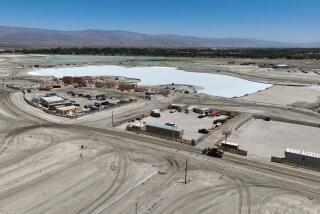Newhall Ranch Development
- Share via
Re “Model City or Monumental Mistake?” Nov. 24:
The Newhall Ranch project will result in additional trips up and down I-5, which is already over capacity. As a “mitigation” for this, the project proposes high-occupancy vehicle lanes for I-5, yet these lanes exist only in the developer’s imagination. Sell that to those who are already commuting up and down I-5.
Many of the measures proposed to mitigate traffic problems created by the development rely on the long-range plan of the MTA. Unfortunately for everyone in the greater Los Angeles region, including the developers, the long-range plan of the MTA simply can’t be relied on. The development’s marketers claim that it is “transit friendly,” but almost nothing real exists to justify the claim. Air-quality impacts of the development will be significant.
The Santa Susana Mountains and the hills to the north of the Santa Clara River, where the development is slated to go, have been identified by USGS geologists as among the most seismically unsafe in the world. More than one agency has concerns about flood control. The developers don’t have a clue what they’re going to do with the trash generated by the project.
Newhall Ranch promises to pose a significant financial burden on the city of Santa Clarita for providing recreational services. No funding mechanism has been identified, and with the recent passage of Prop. 218, none may be possible.
Water supplies sufficient to supply the project do not currently exist. The environmental impact report fails to address the project’s effect on “important ground water recharge projects downstream” (according to the Regional Water Quality Control Board). Estimates of impacts of water pumping for the development are based on averages; unfortunately, averages are made up of wet years and dry years, and we all need water during the dry years as well as the wet years.
It’s good that The Times paid attention to the proposed Newhall Ranch development. It would be better if The Times paid more attention to what the project does, as opposed to how it’s spun.
JIM CHURCHILL
Los Angeles
More to Read
Sign up for Essential California
The most important California stories and recommendations in your inbox every morning.
You may occasionally receive promotional content from the Los Angeles Times.













